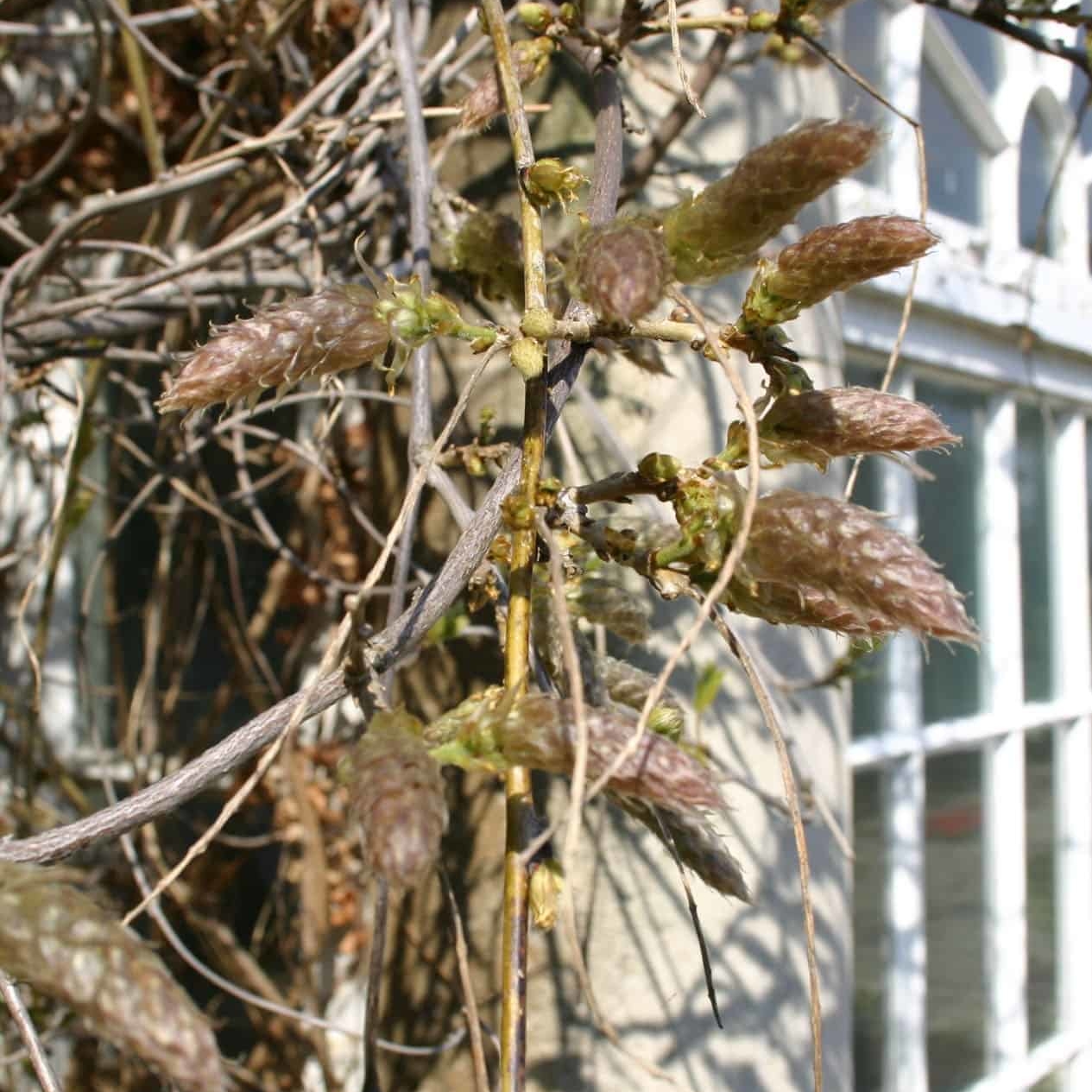How to look after my Wisteria
Caring for wisteria still seems to trouble some people, yet it really is straightforward. Wisteria are among some of the most recognisable and stunning plants grown around the world. No other climber cloaks walls with so much purple, although variations on this colour plus pure white cultivars exist.
The species we grow most commonly are either Wisteria sinensis or W. floribunda. The former – Chinese wisteria – bears its flowers before its leaves appear. Wisteria floribunda hails from Japan and its blooms develop alongside its foliage. These facts seriously influence which species you should choose to grow. W. sinensis performs best on vertical surfaces (house walls, fencing, trelliswork) where its naked flowers will be best displayed. W. floribunda is better grown up and over sturdy arches, arbours and pergolas. This enables its longer racemes (bunches of flowers) to hang down, isolated from the leaves, to full effect.
How to plant wisteria
The optimal spot for a wisteria is in well-drained but fertile soil. They will tolerate some shade, although perform best in full sun. You may grow them from large containers. When growing up a vertical surface, make sure they are 30-40cm out from the base to avoid a “rain shadow” (the dry, shaded area closest to the base of walls and fences). Lean the shoot back towards the surface.
It is possible to nurture wisteria into a free-standing specimen – more on this below.
Training wisteria as a climber
There are only four main points to follow when training wisteria as a climber:
- Cut back the current year’s whippy shoots to just five or six leaves in July or August. This increases air flow and light penetration through the foliage, ripening wood faster and improving bud formation.
- Give a second cut in January or February, pruning back to two or three buds.
- Train wanted shoots along strong, taut training wires placed horizontally along the wall or fence. Tie shoots onto these wires with soft twine.
- Wisteria will respond well to hard pruning if old, diseased or undesirable shoots need removing. Take care when doing this however, as shoots weave around each other; you don’t want to damage healthy, useful growth by mistake.
Training wisteria as a free-standing specimen
For something a little different, cultivate a free-standing specimen or two in your garden.
- Plant a single-stemmed wisteria alongside a steady support (1.5m or more). Tie in the single stem and allow to grow up to the very top of the support.
- Remove the single stem tip in the first spring after it’s reached the top.
- Cut off lower side shoots and trim the topmost side shoots to 15-30cm in length. This gives the plant a strong “head” from which to grow out.
- Once the head has become sufficiently woody, cut shoots back to seven leaves in August.
- Remove old unwanted head shoots in winter to maintain shape.
- Prune shoots back to 2.5cm of their bases in March to uncover flower racemes.
First published January 2019 & reviewed May 2024
Kevin Gelder
Kevin joined Bestall & Co in late 2017 and brought a range of skills with him from a varied background. He gained a degree in French and Italian from Lancaster University in 2009 before successfully completing a PGCE at the University of Sheffield in 2011. He built on his communication skills through secondary language teaching, before working in healthcare administration.
Ultimately though it was his passion for plants and gardening which brought him to Bestall & Co as a member of the planting team, and although he's now moved back to an office based role, the articles he wrote whilst he was still with us live on.



